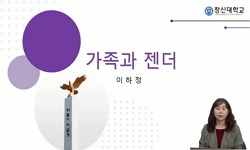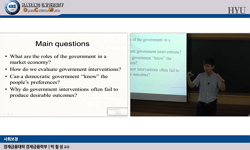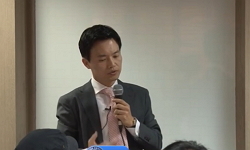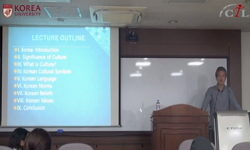본 글은 여성이 경제활동에 참여한다 할지라도 여성에게 여전히 일차적 책임으로 주어지는 무급노동의 성별 분업 실태를 시간사용조사 자료를 통하여 밝히고 한국가족의 존재 형태를 살펴...
http://chineseinput.net/에서 pinyin(병음)방식으로 중국어를 변환할 수 있습니다.
변환된 중국어를 복사하여 사용하시면 됩니다.
- 中文 을 입력하시려면 zhongwen을 입력하시고 space를누르시면됩니다.
- 北京 을 입력하시려면 beijing을 입력하시고 space를 누르시면 됩니다.
https://www.riss.kr/link?id=A76157087
- 저자
- 발행기관
- 학술지명
- 권호사항
-
발행연도
2005
-
작성언어
Korean
- 주제어
-
등재정보
KCI등재
-
자료형태
학술저널
- 발행기관 URL
-
수록면
239-287(49쪽)
- 제공처
-
0
상세조회 -
0
다운로드
부가정보
국문 초록 (Abstract)
본 글은 여성이 경제활동에 참여한다 할지라도 여성에게 여전히 일차적 책임으로 주어지는 무급노동의 성별 분업 실태를 시간사용조사 자료를 통하여 밝히고 한국가족의 존재 형태를 살펴보고자 하였다. 분석에 사용한 자료는 1999년 통계청의 ‘생활시간조사’ 원자료 [rawdata]이며, 분석대상은 맞벌이 부부로 한정하였다.
분석결과를 살펴보면, 첫째, 무급노동시간량에서 맞벌이 부부 여성은 남편보다 무급노동시간이 196분 더 많았으며, 이러한 성별 차이는 다른 어떤 변수의 집단 간 차이보다 큰 것이었다. 무급노동 참여 종류에서 맞벌이 부부 여성은 식사준비와 정리ㆍ청소ㆍ세탁ㆍ미취학 아이의 신체 돌보기 같은 주된 가사노동을, 남성은 쇼핑ㆍ수리ㆍ미취학 아이와 놀아 주기 등 그 외의 가사노동을 담당하는 것으로 나타났다. 둘째, 맞벌이 부부 남성의 무급노동시간이 전통형 부부 남성의 무급 노동시간보다 길지 않았다. 반면 맞벌이 부부 여성은 전업주부가 수행하는 무급노동의 57%만을 수행하면서 자신의 무급노동시간을 조절하고 있었다. 하지만 기존 논의와 다르게 맞벌이 부부 여성은 전업주부가 수행하는 가사노동시간보다는 가족 보살피기 시간을 더 많이 줄이면서 무급노동을 수행하고 있었다. 셋째, 남성은 연령이 낮고 학력이 높고 직업위세가 높다가 해서 무급노동시간이 증가하지 않았으며, 여성의 인적 자원도 무급노동시간의 감소에 영향을 주지 못하였다. 맞벌이 부부 남성과 여성의 무급노동시간은 모두 생애과정(미취학 자녀의 존재)과 시간지원(유급노동시간, 요일)의 영향을 받았는데, 특히 여성이 더 큰 영향을 받고 있어, 가족일이 여전히 여성에게 일차적 책임이 있다는 것을 보여 주었다. 이러한 결과는 한국가족 안에 성역할 분담에 의한 젠더화된 시간사용이 확고하게 자리하고 있다는 것을 보여 주며, 여성의 일과 가족을 양립시키기 위한 복지 서비스와 가족 안에서 성역할 분담의 경계를 완화할 수 있는 노력이 시급하게 요구되고 있음을 시사한다.
다국어 초록 (Multilingual Abstract)
This thesis is designed to explain gender division of unpaid work through a discussion of time use of dual earner couples, Primary sources for analysis in this thesis are from Lifetime Use Survey conducted by N.S.O(National Statistical Office) in 1999...
This thesis is designed to explain gender division of unpaid work through a discussion of time use of dual earner couples, Primary sources for analysis in this thesis are from Lifetime Use Survey conducted by N.S.O(National Statistical Office) in 1999.
The analysis reveals that first, in terms of time quantity, the wives of dual-earner couples have 196 more minutes of unpaid work time than their husbands. It is notable that the differences in gender group in using unpaid work time are more discernable than difference in other categories in Korean society. Moreover most of the time men carry out unpaid work is in the form of play activities with their children or peripheral homework. The other hand, women practice custodial activities and central homework such as cleaning, cooking and so on, This results point out that women’ s time was more permeable and interruptible than men’s. Because they continually had to adjust their life schedules to the needs of husbands and children Second, the husbands of dual-earner couples don’t have much unpaid work time than the husbands of traditional couples. On the other hand, working women only carry out 57% of house wive’s unpaid work time. And working wives reduce more family care time than they cut down homework time. Third, in general unpaid work time of dual-earner couples is thought to be influenced by human resources of their occupation or positions at education. But human resource variables don’t influence the unpaid work time of neither men or women. Unpaid work time of men and women was affected by life course variables of the age of the youngest child and paid work time. But unpaid work time of women is greatly influenced by life course variables and paid work time because women have much more burdens related to unpaid work. In conclusion, the gender difference in the unpaid work time may be caused by the division of the gender role And this discrepancy of unpaid work time leads to gender inequality because it limits equal opportunity to women who can participate in the boundaries of the male-dominated society.
목차 (Table of Contents)
- 국문 초록
- 1. 문제제기
- 2. 무급노동에 대한 이론적 논의와 연구문제의 설정
- 3. 연구방법
- 4. 젠더화된 무급노동시간
- 국문 초록
- 1. 문제제기
- 2. 무급노동에 대한 이론적 논의와 연구문제의 설정
- 3. 연구방법
- 4. 젠더화된 무급노동시간
- 5. 성별 내부 집단의 차이: 시간지원 vs 인적 자원 vs 생애과정
- 6. 결론
- 참고 문헌
- Abstract
동일학술지(권/호) 다른 논문
-
- 한국여성연구소
- 이상경(Lee Sang- Kyung)
- 2005
- KCI등재
-
- 한국여성연구소
- 채석진(Chae Suk-Jin)
- 2005
- KCI등재
-
- 한국여성연구소
- 강이수(Kang Yi-Soo)
- 2005
- KCI등재
-
- 한국여성연구소
- 김미정(Kim Mi-Jeong)
- 2005
- KCI등재





 DBpia
DBpia






